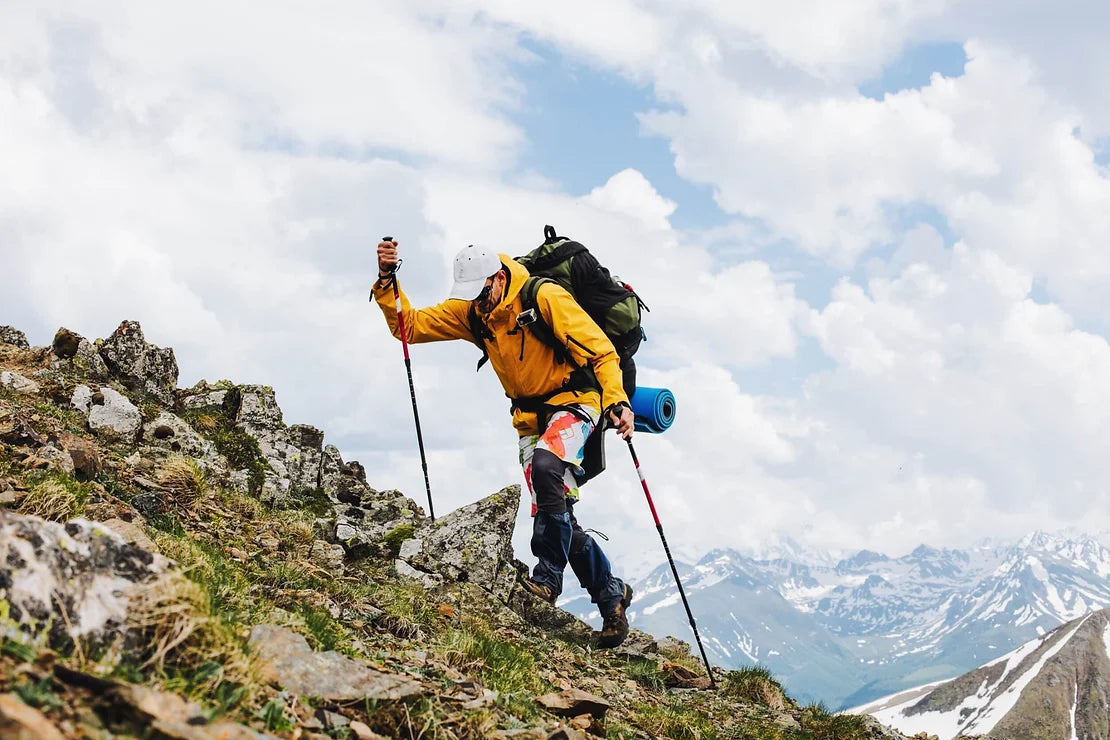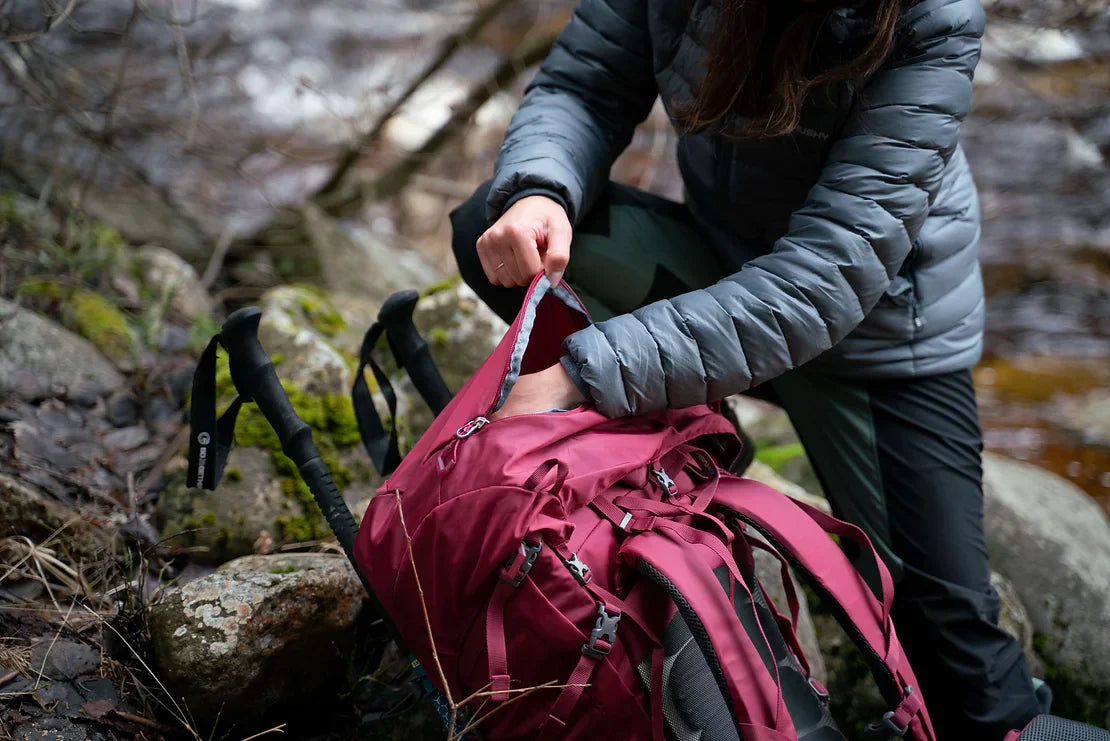Why use trekking poles?
Trekking poles are an indispensable helper for every mountain hiking enthusiast. They help maintain stability and protect our joints. Let's take a look at how to choose trekking poles and how they differ.
I was first introduced to the use of hiking poles in New Zealand, where I started walking in the mountains. The nature there was incredible and walking became an absolute passion for me. As you already know, if you go somewhere after a long time, or the body is not used to walking, pain in the legs and muscles comes. To ease the pain somehow, especially going uphill, I always found a stick in the forest and walked with it. The pressure on my legs and muscles was much less, and I felt much better. One day I discovered hiking poles in a sports store, they were quite a novelty at the time. They immediately flew into the basket, I still remember when my friend who was a sow laughed at me and asked me if I was a pensioner to walk with canes. Many hikers don't allow them, others find them a nuisance, poles seem to divide the hiking community, but nowadays more and more people are using poles. I have to say that I don't regret at all that I bought them then, since then we have been inseparable and I can't imagine any trek without them. In recent years, development has moved forward, and now we can find many types of different materials on the market.

What benefits do wands actually bring?
- Protects your knees, especially going up/down steep hills
- You improve your strength and endurance
- You support balance on uneven roads, crossing snow fields, rivers, etc.
- You improve posture by making the walker more upright when walking, which can aid breathing
- You give the body extra stability
- You burn more calories
- You strengthen the muscles that support the spine
- You build muscles in your arms, shoulders and neck
- You prevent swelling when you climb hills with your arms hanging by your sides, poor blood circulation in your upper limbs, poles help with that too, keep your arms up and moving
- Using poles has been shown to reduce accumulated stress on the feet, legs, knees and back by distributing the load more evenly throughout the body. This is especially true if you are also carrying a backpack.
- You can go uphill faster
- They massively improve the efficiency of your walking technique
- They are very useful for probing when you are testing the depth of water, mud or snow
- Can be used as a tool in case of a medical emergency (splitting)
- A means of defense, you never know what animal might attack you
- Many ultralight hikers today also use poles to build shelters with a light tarp
When is the right time to use wands and how to use them?
When, on the other hand, can they help you? Whenever you go uphill, downhill, or when moving over uneven terrain, crossing rivers, etc. You probably won't notice the benefit right away, but your joints will. When you use hiking poles, 20 percent of your weight is distributed from your legs to your arms, meaning your legs take less impact with each step. If you are crossing a difficult section where your hands are needed, you should store them in your pack.

Tips for trekking poles
- Fixed poles , which we have to choose according to our height, are harder, intended for regular walkers, have a longer life and are more suitable for winter sports, they are not so compact.
- Telescopic poles , with this variant, we can change the size as desired, they are easy to store, but they wear out faster and their damping performance deteriorates. We also divide them into two types, two-part , that is, they are composed of two parts, they have good stiffness, but less consistency, they are also suitable for winter tourism and winter sports. The best for mountain hiking are the three-piece poles that we come across most often, their advantage is that they can be folded nicely and fit comfortably in your backpack.
- Folding poles , they look like a folding pole from a tent, their individual segments are connected by a rope, so you can simply take them apart and fold them into a small package. Unfortunately, these wands have the least strength. They are mostly used for ultra-trial running or light trekking, as they have the smallest weight.
Weight and material: If you are planning a long hike, be careful about the material and weight, for a longer hike it is definitely better to have lighter poles. Trekking poles are usually made of aluminum or carbon (carbon) fiber or fiberglass. However, carbon sticks have excellent properties, but are much more expensive. They are lighter, stiffer and absorb shocks better than aluminum clubs. Carbon poles are popular for winter hiking because they are not as cold to the touch in cold temperatures. The downside to carbon poles is that they are more likely to break under high stress, while aluminum poles tend to bend your pole rather than break, leaving it partially functional. Aluminum sticks are a bit heavier but more affordable. As a good alternative, there are sticks made of fiberglass, it is something between aluminum and carbon, but it is more suitable for softer surfaces.
Grip: It's entirely up to you whether you prefer cork, rubber, soft plastic or EVA foam.
- External Lever Lock , this is a clamping device on the outside of the bar that is easy to use while wearing gloves.
- Super Lock (difficult to adjust, twisting and turning, but the strongest, most durable and reliable) manufacturer: LEKI
- Flicklock (makes it easier to adjust the height of trekking poles, the lock clamps around the pole, easy to adjust and secure) by Black Diamond
- Duo Lock (easiest to use and reliable, very similar to Black Diamond except it applies pressure to the bar instead of clamping around it) Manufacturer: REI, Komperdell
- Push-bottom lock . It is a simple mechanism that locks the size you choose with one pull, there is usually a locking pin, a quick release, and this locks the poles, mostly with folding poles.
- Twist lock - rotating tightening, inside there is a divider that opens or closes, so you can always set the size you need and simply tighten it. I would like to point out that this type of locking mechanism is of the lowest quality for me, after time the material inside wears out, the stick changes its size subtly, so it needs to be tightened more often, and in winter it is quite a problem, because when it freezes, it cannot be loosened, or tighten.
Baskets and Tips: Baskets are usually included with every club you buy. They are basically round rings that you put on the tips of the spikes. They are usually made of plastic or rubber. They are mostly used in snow, mud or sand.
- Rubber tips are suitable for rock, do not leave unsightly scratches on natural material and do not slip.
- Carbides provide more grip on mud and ice. Very durable tip for demanding.
How to properly use trekking poles
- On flat ground – Forearm should be parallel to the ground and elbows should be at a 90 degree angle
- When walking uphill - set the height 5-10 cm shorter, if the terrain is steeper, a little more
- When walking downhill - increase the length by 5-10 cm from their standard position, increase balance and reduce pressure on the knees
- When traversing snow traverses – your downhill pole should be longer than your climbing pole. possibilities, the future, even health, and it's damn worth it. Last but not least, pay attention to the materials, seams and finally the color when choosing.
It is essential to hold your hands through the wrist straps. These are there to help take the weight of the pack off your hips and shoulders. The correct fit is to put your hand up through the bottom.

Trekking poles are not absolutely necessary equipment for the mountains, but they offer a lot of benefits that make it worthwhile to have them with you on the way. As I already mentioned, they help not to stress the joints as much, you have more energy and a lot more. However, never forget to set the length correctly to ensure proper technique and to get all the benefits they offer.



Leave a comment
All comments are moderated before being published.
This site is protected by hCaptcha and the hCaptcha Privacy Policy and Terms of Service apply.